Europe
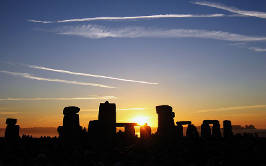
Europe encompasses an area of 10,400,000 km² (4,000,000 square miles), stretching from Asia to the Atlantic, and from Africa to the Arctic. European countries welcome more than 480 million international visitors per year, more than half of the global market, and 7 of the 10 most visited countries are European nations. It's easy to see why - a well preserved cultural heritage, open borders and efficient infrastructure makes visiting Europe a breeze, and rarely will you have to travel more than a few hours before you can immerse yourself in a new culture, and dive into a different phrasebook. Although it is the world's smallest continent in land surface area, there are profound differences between the cultures and ways of life in its countries.
The all too common concept of trying to "do Europe" is pretty unrealistic, and will most likely, if not ruin your vacation, then at least make it less enjoyable. While it is true that Europe is compact and easy to get around with efficient infrastructure set up everywhere, as previously mentioned, it also has more preserved history packed into it than virtually anywhere else. There are more than 400 world heritage sites on the continent, and that is just the very tip of the iceberg. So instead of running a mad dash through Europe in an attempt to get the ritual photos of you in front of the Colosseum, the Eiffel Tower, Big Ben etc. over and done with, the key is prioritize, pick 2-3 sights you really want to see per week, and plan a route from that, there are likely to be some amazing, world class sights and attractions, that you haven't even thought about, somewhere in between two given cities, and finding those will - in all likelihood - be infinitely more rewarding than following the beaten down post card route.
Historical and cultural attractions
Europe was home to some of the world's most advanced civilisations, which has led to an astonishing cultural heritage today. Ancient Greece has been credited with the foundation of Western culture, and has been immensely influential on the language, politics, educational systems, philosophy, science, and arts of the European continent. Ancient Greek structures are scattered over Greece and Turkey, including Delphi, Olympia, Sparta, Ephesus, Lycia and of course the Parthenon in Athens.
Ancient Greece was followed by the Roman Empire, one of the greatest civilisations in the world that took hold of large swathes of Europe, North Africa and the Middle East. Visiting Roman ruins in Rome is a no-brainer, with the magnificent Colosseum, Pantheon and the Roman Forum. Many Roman ruins can also be found in Spain, such as the remains at Merida, Italica, Segovia, Toledo and Terragona. With 47 sites, Italy has the most UNESCO World Heritage Sites of any country in the world, directly followed by Spain with 43.
Albania
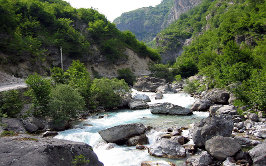
Albania is a small country in the Balkans. It shares borders with Greece, the Republic of Macedonia, Kosovo, and Montenegro.
There are many things to do in Albania. Many roads are paved; however they are very windy
The coastline is always a place to go, with its clear turquoise seas, and its many islands cast upon it, like in Saranda, the southern most coastal city in Albania. Note that more than half of the coastline stretching to the north of Vlore and up to the Montenegrin border contains sand beaches while the Albanian Riviera stretching south of Vlore is made up of rocky beaches. Along the Albanian Riviera, from Vlore to about Qeparo there exist mainly wooden villa complexes, bed and breakfasts, camping sites and a few beach resorts as accommodation facilities. Llogara Pass is a mountain pass located near Llogara National Park offering a majestic view of the riviera from above. Nearby is found Cesar's Pass, the place where Julius Cesar passed in his pursuit of Pompey.
Dajti Mountain, a popular sight in Tirana allows you to get a whole green view of the capital.
A walk around southern cities like Butrint, a UNESCO world heritage site, is always ideal and memorable. Butrint is home to many ancient ruins.
Castles are in many cities in Albania. Their beauty reminds anyone of the ancient times of Albania, and the world. There is Petrela Castle near Tirana, Rozafa castle in Shkodra, the inhabited castle of Berat, and Skanderbeg Castle in Kruje, (named after the national hero and now a popular museum holding his belongings).
Palasa, Near Himara. Palasa is a beautiful village in Himara with great beaches and amazing nature. This is the place where Julius Caesar rested his legion at the pursuit of Pompey. There are no touristic resorts, but you can ask for an apartment at the local caffe. The apartments usually are with two rooms and a toilette, but usually clean, safe and comfortable.
In southern Albania you can see the influence of Turks and Greeks. In northern Albania you can see many ancient Illyrian ruins and very little foreign influence.
Austria
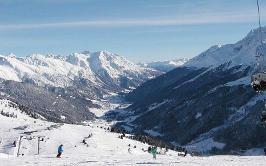
Austria (German: Österreich, literally "the Eastern Realm" or "Eastern Empire") is a land-locked alpine German speaking country in Central Europe bordering Switzerland and Liechtenstein to the west, Germany and Czech Republic to the north, Slovakia and Hungary to the east and Slovenia and Italy to the south. Austria, along with neighboring Switzerland, is the winter sports capital of Europe. However, it is just as popular for summer tourists who visit its historic cities and villages and hike in the magnificent scenery of the Alps.
Belgium
Belgium (Dutch: België, French: Belgique, German: Belgien) is a low-lying country on the North Sea coast in the Benelux. With the majority of West European capitals within 1,000 km of the Belgian capital of Brussels, and as a member of the long-standing international Benelux community, Belgium sits at the crossroads of Western Europe. Its immediate neighbors are France to the southwest, Luxembourg to the southeast, Germany to the east and the Netherlands to the north.
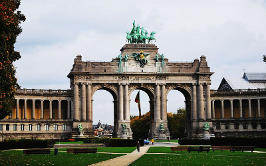
Mostly known for its key role in European Union administration, the small nation of Belgium might leave you surprised by its rich and gorgeous heritage. It boasts a number of fascinatingly historic cities packed with medieval and Art Nouveau architecture and famous for their long traditions in arts, fashion and fine dining. If you've seen the best of them, the Belgian countryside offers anything from sandy beaches to the densely forested hills and ridges of the Ardennes.
Brussels, the country's vibrant capital, is a modern world city with a highly international character. It combines massive post-modern buildings in its European Quarter with impressive historic monuments, such as the World Heritage listed Grand Place, surrounded by guildhouses and the Gothic town hall. There's Laken Castle and the large St. Michael and St. Gudula Cathedral, dedicated to the cities patron saints. The Royal Palace is a more recent but no less grand structure. One of the city's most famous landmarks is the Atomium, a remarkable steel structure and remnant of the 1958 World's Fair. And yet, with all those magnificent sights at hand, many travellers' favourite is a tiny bronze fountain in the shape of a peeing boy: the curious Manneken Pis.
Perhaps the most popular of the Belgian cities is Bruges. Much of the excellent architecture that arose during the towns Golden Age, roughly the 14th century, remains intact and the old centre is a valued UNESCO World Heritage Site. Among its most prominent landmarks is the 13th century belfry, where the carillonneur still rings the bells on a daily bases. With countless other noteworthy monuments, Bruges is a highly popular destination and get a bit overcrowded during holidays. And then there's Ghent, which in ages past was one of the wealthiest cities in Northern Europe. Although larger and much busier than Bruges, its excellent medieval architecture can definitely compete. Its beguinages, belfry and former cloth hall are World Heritage Sites. Or visit Antwerp, the country's current place to be as it is a hotspot of the Belgian fashion, clubbing, arts and diamonds scenes. Nevertheless, the city's timeless old centre is right up there with the others, boasting the countries most stunning cathedrals. Other pleasant cities with good sights include Leuven, with the oldest Catholic University still in use and Liège.
For hiking, biking and camping, head to the rugged hills of the Ardennes with their tight forests, caves and cliffs. They are home to wild boar, deer and lynx and hide a number of friendly villages, lots of castles and a few other notable sights. The impressive caves of Han-sur-Lesse, the castle of Bouillon and the modern Labyrinth of Barvaux are some of the best picks. The city of Namur makes a great base from where to explore the Ardennes and has some fine sights itself too. The city is beautifully located along the rivers Meuse and Sambre and from the ancient citadel you'll have a great view over town.
The Belgians brought forward a good number of world famous masters of art, and their love for arts is still today reflected in the range of fine arts museums. The Musées Royaux des Beaux-Arts in Brussels and the Koninklijk Museum voor Schone Kunsten in Antwerp are just a few excellent examples. However, the Belgians love museums, with over 80 of them in the capital alone. Besides arts, they display anything from history and folkore to industry and technology. As some of the worst fighting of both World Wars took place on Belgian territory, there's also a large number of memorials and museums dedicated to those dark times, along some humbling military cemeteries.
Finland
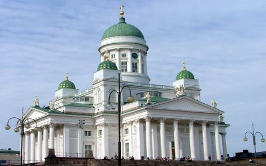
Finland (Finnish: Suomi, Swedish: Finland) is in Northern Europe and has borders with Russia to the east, Norway to the north, and Sweden to the west. The country is a thoroughly modern welfare state with well-planned and comfortable small towns and cities, but still offers vast areas of unspoiled nature. Finland has approximately 188,000 lakes (about 10% of the country) and a similar number of islands. In the northernmost part of the country the Northern Lights can be seen in the winter and midnight sun in the summer. Finns also claim the mythical mountain of Korvatunturi as the home of Santa Claus, and a burgeoning tourist industry in Lapland caters to Santa fans. Despite living in one of the most technologically developed countries in the world, the Finns love to head to their summer cottages in the warmer months to enjoy all manner of relaxing pastimes including sauna, swimming, fishing and barbecuing. Today, Finland has a distinctive language and culture that marks it apart from the rest of Nordic Europe.
A selection of top sights in Finland:
- Central Helsinki, the Daughter of the Baltic, on a warm and sunny summer day
- The historical sites of Turku and the vast archipelago around it, best viewed from the deck of a giant car ferry.
- Pottering around the picturesque wooden houses of Porvoo, Finland's second-oldest city
- Renting a car and exploring the Lake Land of Eastern Finland, an area dotted with around 60 000 lakes with a similar number of islands, which in turn have their own lakes...
- Olavinlinna Castle in Savonlinna, Finland's most atmospheric castle, especially during the yearly Opera Festival
- Hämeenlinna Castle in Hämeenlinna is Finland's oldest castle. Built in 13th century.
- Relaxing at a sauna-equipped cottage in the lake country of Eastern Finland
- Icebreaker cruising and the world's biggest snow castle in Kemi
- Seeing the Northern Lights and trying your hand sledding down a mile-long track at Saariselkä
France
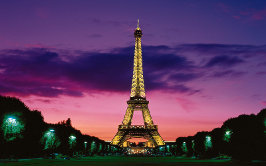
France is a country located in Western Europe. Clockwise from the north, France borders Belgium and Luxembourg to the northeast, Germany and Switzerland to the east, Italy to the south-east and Spain to the south-west, across the Pyrenees mountain range (the small country of Andorra lies in between the two countries). The Mediterranean Sea lies to the south of France, with the Principality of Monaco forming a small enclave. To the west, France has a long Atlantic Ocean coastline, while to the north lies the English Channel, across which lies the last of France's neighbours, England (part of the United Kingdom).
France has been the world's most popular tourist destination for over twenty years (81.9 million in 2007) and it's geographically one of the most diverse countries in Europe. Its cities contain some of the greatest treasures in Europe, its countryside is prosperous and well tended and it boasts dozens of major tourist attractions, like Paris, the French Riviera, the Atlantic beaches, the winter sport resorts of the French Alps, the castles of the Loire Valley, Brittany and Normandy. The country is renowned for its gastronomy (particularly wines and cheeses), history, culture and fashion.
Thinking of France, you might imagine the iconic Eiffel Tower, the Arc de Triomphe or the famous smile of Mona Lisa. You might think of drinking coffee in the lively Paris cafés where great intellectuals lingered in past times, or of eating croissants in a local bistro of a sleepy but gorgeous village in the countryside. Probably, images of splendid châteaux will spring to your mind, of lavender fields or perhaps of vineyards as far as the eye can see. Or perhaps, you'd envisage the chic resorts of the Cote D'Azur. And you wouldn't be wrong. However, they are only the top of the iceberg when it comes to France's many sights and attractions.
Cities
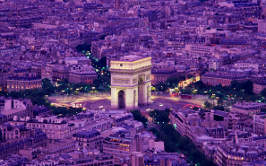
Paris. the "City of Light" and the capital of romance has been a travellers' magnet for centuries and a real must-see. Of course, no visit would be complete without a glance at its world famous landmarks. The Eiffel Tower is hard to miss, especially when it is lit beautifully at night, but the Arc de Triomphe, Notre Dame and Sacré Coeur are both famous and stunning sights too. With no less than 3800 national monuments in and around Paris, history is literally around every corner. Stroll through the city's spacious green parks, with the Luxembourg Gardens as one of the favourites, and make sure to spend some time on the famous banks of the river Seine. Also, don't miss the magnificent Palace of Versailles, the most grand reminder of the Ancient Regime located just 20 km away from the capital. Bordeaux is famous for its wine but also a bustling city with lots of historic sights to discover. It is listed as a World Heritage Site for being "an outstanding urban and architectural ensemble". Lyon, the country's second largest city, is listed too, and boasts a beautiful old centre as well as a number of Roman ruins. Strasbourg, one of the EU headquarters, has a character of its own, with clear German influences. Montpellier is one the best places in the south, with lots of monumental buildings and nice cafés. In the west there's the beautiful historic city of Nantes, home to the Château des ducs de Bretagne and many other monuments. The Capitole de Toulouse is situated right at the heart that famous university city's street plan. Last but not least, don't overlook Arles, with its World Heritage Listed Roman and Romanesque Monuments.
French Riviera
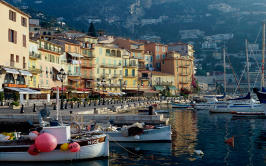
And then there are the magnificent cities of the Côte d'Azur, once the place to be for the rich and famous but now equally popular with a general crowd. Its sandy beaches, beautiful bays, rocky cliffs and lovely towns has made it one of the main yachting and cruising areas in the world as well as popular destination for land-bound travellers. There's bustling Nice, where some 4 million tourists a year enjoy the stony beaches and stroll over the Promenade des Anglais. Avignon with its splendid ramparts and Palais-des-Papes was once the seat of popes. Although Saint-Tropez gets overcrowded in summer, it's a delightful place in any other season. The same goes for Cannes, where the jet-set of the film industry gathers each year for the famous Cannes Film Festival. From there, you can hop on a boat to the much more peaceful Îles de Lérins.
Much smaller in size but just as gorgeous (and popular) are the perched villages of Gourdon and Èze, which is located on a 427 meter high cliff, much like an “eagle's nest”. Both offer some stunning panoramic views. From Èze, its a very short trip to the glitter and glamour of Monaco. For the world's millionaires and aristocracy, the green peninsula of Saint-Jean-Cap-Ferrat is an old time favourite with the impressive Villa Ephrussi de Rothschild full of impressionist art as its main sight. A bit more inland but well-worth a visit are the towns of Grasse, famous for its perfumeries, and Biot, known for its glass blowers. The huge city and arts-hub Marseille is usually not considered part of the Cote D'Azur, but is very close. It has plenty of historic sights and nearby are the stunning Calanques, a series of miniature fjords it shares with Cassis.
Countryside & villages
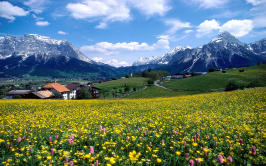
You haven't seen the best of France if you haven't had at least a taste of its amazing countryside, dotted with wonderful medieval villages and castles. There are great examples in any part of the country, but some 156 small towns have been identified as the most beautiful villages in France[46]. The country's landscapes vary from the snow-covered peaks of the Alps and the Pyrenees with their many winter sports resorts to lush river valleys, dense forests and huge stretches of farmland and vineyards. The Provence, backing a good part of the Côte d'Azur, is one of the most beloved regions. It has a typical Mediterranean atmosphere and is famous for its lavender fields and rosé wines. It's also home to the stunning Verdon Gorge, one of the most beautiful gorges in Europe. The rolling riverine landscape of the Loire Valley is home to many great castles, of which Châteaux Amboise, Château de Villandry, Azay-le-Rideau, Chambord and Châteaux du Pin are some of the finest examples. The western region of Brittany reaches far into the Atlantic and boasts many megalith monuments such as those near Carnac. The beaches of Normandy, also on the Atlantic coast, are famed for the D-Day Allied invasion on June 6, 1944. Although the humbling Normandy American Cemetery and countless museums, memorials and war time remains keep memory of those dark days alive, the region is now a pleasant and popular destination. Its picturesque coast line includes both long stretches of beach and steep limestone cliffs, such as those near Étretat). The region is also home to the splendid and World Heritage listed Mont-Saint-Michel and its Bay. The lush hills of the Dordogne form another region famous for its castles, with over 1500 of them on its 9000 km2 area.
Art museums
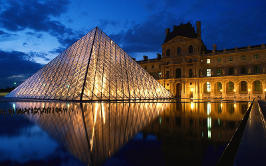
As the French have a real taste for art, the country has numerous art galleries and museums. Several of them are widely considered to be among the finest museums in the world of art, art-history, and culture. The grandeur and fame of the Musée du Louvre in Paris can hardly be matched by any other museum in the world. It boasts a fabulous collection of art from antiquity to the 19th century and is home of the Mona Lisa and many other renowned works. At just a 15 minute walk from there is the Musée d'Orsay, another world class museum that picks up roughly where the Louvre's collections ends. It's located in an old railway station and houses the national collection of art works from the 1848 to 1914 period. Its excellent collection includes some of the best French Impressionist, post-Impressionist and Art Nouveau works, including Degas' ballerinas and Monet's waterlillies. The Musée National d'Art Moderne in Centre Pompidou, still in France's capital, is the largest museum for modern art in Europe. The Museum of Fine Arts in Lyon has an excellent collection varying from ancient Egypt antiquities to Modern art paintings and sculptures. In Lille you'll find the Palais des Beaux-Arts de Lille, one of the country's largest museums. Its varied collection is second in size after the Louvre and boasts anything from antiquities to modern art. Smaller but still outstanding are the collections of the Musée Fabre in Montpellier, Musée Toulouse-Lautrec in Albi and the Picasso Museum in Paris. Marseille has many galleries and its Musée Cantini has a good collection of modern art associated with Marseille as well as several works by Picasso. Fondation Maeght houses modern art too and is situated in Saint-Paul de Vence.
Parks & natural attractions
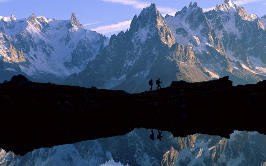
Disneyland Resort Paris is by far France's most popular park, visited by families from all over Europe. The country's national parks have quite some visitors too though, due to their splendid scenery and great opportunities for outdoor sports. Vanoise National Park is the oldest and one of the largest parks, named after the Vanoise massif. Its highest peak is the Grande Casse at 3,855 m. The impressive natural landscapes of Parc national des Pyrénées are right on the southern border of France and extend well into Spain, where they are part of the Parc National Ordesa y Monte Perdido The whole area is listed as UNESCO World Heritage. In the French part, the glacial cirques of Gavarnie, Estaubé and Troumouse are some of the best sights, as is the wall of Barroud. The again mountainous Cévennes National Park covers parts of the Languedoc-Roussillon (including te popular Ardèche), Midi-Pyrénées and the Rhône-Alpes regions. Its headquarters is in the castle of Florac, but there are towns all over the park. Donkey rides are available and the Cave formation of Aven Armand is one of the parks' best sights.
Not yet under a protective status but highly popular is Mont Blanc, the highest peak in Europe and attractive for climbing, hiking and skiing. From the French side, it is mostly explored from Chamonix, a well known resort on the foot of the mountain.
Germany

Germany, (officially: the Federal Republic of Germany), (German: Bundesrepublik Deutschland) is the largest country in Central Europe. It is bordered to the north by Denmark, to the east by Poland and the Czech Republic, to the south by Austria and Switzerland, and to the west by France, Luxembourg, Belgium and the Netherlands. Germany is a federation of 16 states, roughly corresponding to regions with their own distinct and unique cultures. Germany is one of the most influential nations in European culture, and one of the world's main economic powers. Known around the world for its precision engineering and high-tech products, it is equally admired by visitors for its old-world charm and "Gemütlichkeit" (coziness) or hospitality. If you have perceptions of Germany as simply homogeneous, it will surprise you with its many historical regions and much local diversity for its relatively small size.
Cultural and historical attractions
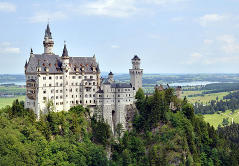
When thinking of Germany, beer, lederhosen and Alpine hats quickly come to mind, but these stereotypes mostly relate to Bavarian culture and do not represent Germany as a whole. Germany is a vast and diverse country with 16 culturally unique states that only form a political union since 1871. If you're still looking for the cliches, the Romantic Road is a famous scenic route along romantic castles and picturesque villages. With its fairy tale appearance, the Neuschwanstein Castle could be considered the most iconic of German castles. The walled city of Rothenburg ob der Tauber has a beautiful mediaeval centre that seems untouched by the passage of time. Similar typical German towns can be found elsewhere in the country, like Bamberg, Celle, Heidelberg, Lübeck and Quedlinburg. Your picture postcard visit to Germany will be complete with a visit to the beer halls of Munich and a peek of the Alps at Garmisch-Partenkirchen.
Germany is a modern industrial nation, and the Wirtschaftswunder is best represented by the industrial heritage of the Ruhr. Hamburg is another economic powerhouse with the second busiest port of the continent. Frankfurt is the financial centre of Germany, and of Europe as a whole being the base of the European Central Bank. Its skyline at least comes close to those found at the other side of the Atlantic. The fashion city of Düsseldorf, media industry of Cologne and car companies in Stuttgart each represent a flourishing sector of the German economic miracle.
A completely different experience can be found in Berlin, a city unlikely to be found anywhere else on the planet. While architecturally an odd mismatch of sterilised apartment blocks, post-modernist glass and steel structures and some historic left-overs, it has a laid-back atmosphere and a culture of internationalism that accepts everyone as a "Berliner". Its turbulent history gave rise to an enormous wealth of historical attractions, among them the Berlin Wall, Brandenburger Tor, Bundestag, Checkpoint Charlie, Fernsehturm, Holocaust Memorial, Rotes Rathaus and the DDR Museum.
Natural attractions
Due to its size and location in Central Europe, Germany boasts a large variety of different landscapes. In the north, Germany has an extensive coastline along the North Sea and the Baltic Seas in a vast area known as the North German Plain. The landscape is very flat and the climate is rough with strong winds and mild, chilly temperatures. Due to the south-easterly winds that press water into the German Bight, tidal variations are exceptionally high, creating the Wadden Sea. Vast areas of the seabed are uncovered twice a day, allowing one to walk from one of the numerous islands to another. The East Frisian Islands just off the coast are very picturesque, although mostly visited by the Germans themselves. Rügen and Usedom are favourite white sand resorts along the Baltic Sea.
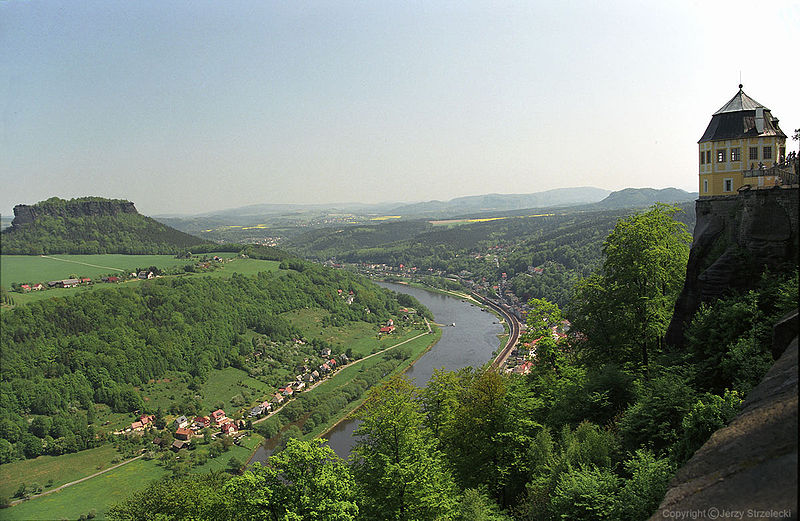
The central half of Germany is a patchwork of the Central Uplands, hilly rural areas where fields and forests intermix with larger cities. Many of these hill ranges are tourist destinations, like the Bavarian Forest, the Black Forest, the Harz, the Ore Mountains and Saxon Switzerland. The Rhine Valley has a very mild, amenable climate and fertile grounds, making it the country's most important area for wine and fruit growing.
In the extreme south, bordering Austria, Germany contains a small portion of the Alps, Central Europe's highest elevation, rising as high as 4000m (12,000 ft) above sea level, with the highest summit in Germany being the Zugspitze, at 2962m (9717 ft). While only a small part of the Alps lie in Germany, they are famous for their beauty and the unique Bavarian culture. Along the country's south-western border with Switzerland and Austria lies Lake Constance, Germany's largest fresh-water lake.
Greece
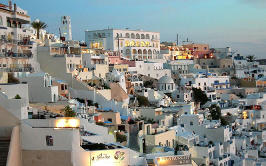
Greece is a country in Southern Europe, on the southernmost tip of the Balkan peninsula, with extensive coastlines and islands in the Aegean, Ionian, and Mediterranean Seas. It shares borders in the north with Albania, the Republic of Macedonia (FYROM), Bulgaria, and Turkey. It has an ancient culture that has had a significant influence on the arts, language, philosophy, politics, and sports of western society, including the genres of comedy and drama, western alphabets, Platonic ideals and the Socratic method, democracies and republics, and the Olympics. Furthermore it's a geographically appealing place to visit, with a mountainous mainland and idyllic island beaches.
Few countries can proud themselves on a heritage as important to Western civilization as Greece. A range of first class historic landmarks remind of the days when the great Greek emperors and writers made their mark on the development of science, literature and democracy. No less than 17 of those monuments are listed as World Heritage Sites. However, the many charming little islands, sandy beaches and picturesque whitewashed coastal towns are at least as much a reason to come for the millions of tourists that this Mediterranean country receives each year.
Cultural heritage
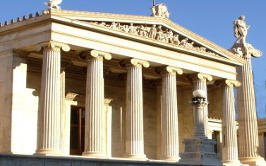
World famous are the iconic Parthenon in the bustling capital Athens and the splendid site of Delphi, where the mighty emperors sought the prophecies of the most prominent oracle in the ancient Greek world. There's the temple of Apollo at Bassae and the gorgeous old city of Rhodes, once overlooked by the Colossus of Rhodes. The archaeological site of Olympia is the birthplace of our modern Olympic Games and the place from where the Olympic flame is sent across the world. The many Eastern Orthodox monasteries of Meteora are just stunning to look at, built high on natural sandstone rock pillars. At the small town of Vergina the ancient site of Agai was found, and many valuable artifacts were discovered in several untouched tombs, one of them being the tomb of Philip II of Macedon, father of Alexander the Great. Proudly situated on Mt. Taygetos is the ancient town of Mystras, close to (and often mistaken for) ancient Sparta. Another great site is the island of Delos, not far from the popular holiday destination Mykonos. According to myths, this is were Apollo and Artemis were born. The island used to be the main Panhellenic sanctuary and is now dotted with archaeological remains.
Some major sights are nicely located on one of the beautiful Greek islands, allowing for a delightful combination of sightseeing and relaxing on one of the many fine beaches. Patmos is a lovely example, boasting the historic centre Chora, the Monastery of Saint John the Theologian and the Cave of the Apocalypse, but also some pleasant sea side restaurants with pretty views. Corfu has the same characteristics, being a popular holiday destination with good beaches and an impressive historic town centre. The beach towns of Samos, just a stone's throw away from the Turkish mainland, are a good place to try the islands local wines (famous in the ancient world!). On the island are also the World Heritage Temple of Hera, the remains of the fortified port of Pythagoreion and the famous Tunnel of Eupalinos, a 1 km long subterranean aqueduct built in the 6th century BC. Although not an island, the ancient Mount Athos is located in the north of Greece, on the peninsula of Chalkidiki. It's one of the country's most popular tourist regions with excellent beaches, numerous other ancient sites and many charming villages.
If you still want more of the historic stuff, admire the massive Sanctuary of Asklepios at Epidaurus or the Archaeological Sites of Mycenae and Tiryns. The Monasteries of Daphni (Athens), Hosios Loukas (Beotia) and Nea Moni (on the island of Chios) complete the World Hertiage listings for Greece.
Islands
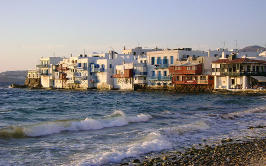
When it comes to Greece's famously gorgeous islands, it's hard to take your pick out of the 6000 options you have, 227 of them being inhabited. Their rocky coast lines, sandy beaches, charming villages, sheltered bays and many yacht harbours make them extremely popular among all kinds of travellers. The large island of Crete is a highly popular tourist destination, with landscapes varying from great sandy palm beaches to snow-covered high peaks and stunning river gorges and a good deal of night life in its main tourist towns. If you're looking to party at night, lovely Mykonos or Ios are good options too. The volcanic island of Santorini is one of the most romantic picks and offers some spectacular views. Its whitewashed capital of Fira is dramatically situated on the edge of a 400m high cliff, overlooking a beautiful blue lagoon. Other popular ones are Lesbos, Paros, Lefkada and Kos. The National Marine Park on Zakynthos is the primary nesting ground for loggerhead sea turtles in the Mediterranean. The rugged, green hills and valleys of Kefalonia boast a number of vineyards, and the island's cliffs and beautiful beaches make it a tourist hotspot. For a slightly more authentic and less touristy experience, try Syros, Amorgos or any of the other small and less developed islands.
Hungary
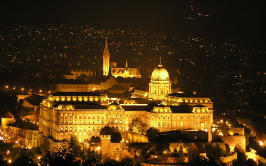
Hungary is a country in Central Europe. Member of the European Union and the Schengen Border-less Europe Agreement. The country offers many diverse destinations: relatively low mountains in the north-west, the Great Plain in the east, lakes and rivers of all sorts (including Balaton - the largest lake in Central Europe), and many beautiful small villages and hidden gems of cities. Top this off with Hungary's great accessibility in the middle of Europe, a vivid culture and economy, and you get a destination absolutely not worth missing if you're in the region.
Hungary has several World Heritage sites. These are:
- Budapest, including the Banks of the Danube, the Buda Castle Quarter and Andrássy Avenue
- Old Village of Hollókő and its Surroundings
- Caves of Aggtelek Karst and Slovak Karst
- Millenary Benedictine Abbey of Pannonhalma and its Natural Environment
- Hortobágy National Park - the Puszta
- Early Christian Necropolis of Pécs (Sopianae)
- Fertő/Neusiedlersee Cultural Landscape
- Tokaj Wine Region Historic Cultural Landscape
- Tiszavirágzás. In mid-June the Tisza produces swarms of mayflies which are likened to flowers. Once decimated by pollution, the population is rebounding. (They're famous for living only for 1-2 days.)
Iceland
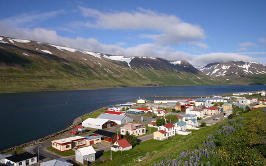
Iceland is a mountainous island nation in the north Atlantic Ocean, located between Europe and North America. Though not part of the continental mainland, the country is considered European. The name of the country - Iceland - may not be that appropriate: although 10% of Iceland is covered by glaciers, it has a surprisingly mild climate and countless geothermal hot-spots. The native spelling ("Ísland") is appropriate in English as well.
- The Blue Lagoon is a geothermal spa and the most famous sight in Iceland.
- The Gullfoss waterfall is quite spectacular. Geysir, the namesake of all geysers, and its neighbour Strokkur which erupts every five minutes or so.
- Þingvellir National Park, a beautiful landscape of water-cut lava fields, which is historically important as the site of Iceland's parliament from 930 AD.
- Vatnajökull glacier is in Southeast Iceland and is Europe's largest glacier. Jökulsárlón, the largest glacier lake in Iceland, is located off Route 1 and part of Vatnajökull glacier.
- In the colder months, one may frequently get stunning views of the Aurora Borealis, a.k.a. Northern Lights anywhere away from city lights.
Italy
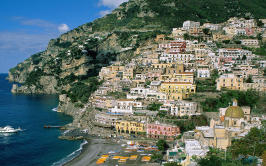
Italy is a large country in Southern Europe. Together with Greece, it is acknowledged as the birthplace of Western culture. Not surprisingly, it is also home to the greatest number of UNESCO World Heritage Sites in the world. High art and monuments are to be found everywhere around the country. It is also famous worldwide for its delicious cuisine, its trendy fashions, luxury sports cars and motorcycles, diverse regional cultures and dialects, as well as for its many beautiful coasts, alpine lakes and mountains (the Alps and Apennines). No wonder it is often nicknamed Il Bel Paese (The Beautiful Country).
Two independent mini-states are surrounded entirely by Italy: San Marino and Vatican City. While technically not part of the European Union, both of these states are also part of the Schengen Region and the European Monetary Union, (EMU). Apart from different police uniforms, there is no evident transition from these states and Italy's territory, and the currency is the same. Italian is also the lingua-franca in both city-states.
There is so much to see in Italy that it is difficult to know where to begin. Virtually every small village has an interesting location or two, plus a couple of other things to see.
- Etruscan Italy: If you have limited time and no potential to travel outside the main cities, then don't miss the amazing collection at the Etruscan Museum at Villa Giulia in Rome. Hiring a car gives access to the painted tombs and museum of Tarquinia or the enormous burial complex at Cerveteri and those are just the sites within easy reach of Rome.
- The Greek Influence: Well-preserved Greek temples at Agrigento in the southwest of Sicily and at Paestum, just south of Naples, give a good understanding of the extent of Greek influence on Italy.
- Roman ruins: From the south, in Sicily, to the north of the country Italy is full of reminders of the Roman empire. In Taormina, Sicily check out the Roman theatre, with excellent views of Mt. Etna on a clear day. Also in Sicily, don't miss the well-preserved mosaics at Piazza Armerina. Moving north to just south of Naples, you find Pompeii and Herculaneum, covered in lava by Mt. Vesuvius and, as a result, amazingly well preserved. To Rome and every street in the center seems to have a few pieces of inscribed Roman stone built into more recent buildings. Don't miss the Colosseum, the Roman Forum, the Aqueducts, the Appian Way, and a dozen or so museums devoted to Roman ruins. Further north, the Roman amphitheatre at Verona is definitely not to be missed.
- Christian Italy: The Vatican is the seat of the Roman Catholic Church. Although inside Rome it has the status of a separate state. Don't miss St Peter's and the Vatican Museum. Rome, itself, has over 900 churches; a large number of these are worth a quick visit. Throughout Italy there is some truly amazing Christian architecture covering the Romanesque (700-1200); Gothic (1100-1450); Renaissance (1400-1600); and ornate Baroque (1600-1830) styles. Although theft of artwork has been a problem, major city churches and cathedrals retain an enormous number of paintings and sculptures and others have been moved to city and Church museums. Frescoes and mosaics are everywhere, and quite stunning. Don't just look for churches: in rural areas there are some fascinating monasteries to be discovered,
- The Byzantine Cities: The Byzantines controlled northern Italy until kicked out by the Lombards in 751. Venice is of course world famous and nearby Chioggia, also in the Lagoon, is a smaller version. Ravenna's churches have some incredible mosaics. Visiting Ravenna requires a bit of a detour, but it is well worth it.
- The Renaissance: Start with a visit to Piazza Michelangelo in Florence to admire the famous view. Then set about exploring the many museums, both inside and outside Florence, that house Renaissance masterpieces. The Renaissance, or Rebirth, (Rinascimento in Italian) lasted between 14th and 16th centuries and is generally believed to have begun in Florence. The list of famous names is endless: in architecture Ghiberti (the cathedral's bronze doors), Brunelleschi (the dome), and Giotto (the bell tower). In literature: Dante, Petrarch and Machiavelli. In painting and sculpture: Leonardo da Vinci, Michelangelo, Donatello, Masaccio and Boticelli.
- The Streets and squares: You could visit Italy's cities, never go in a church, museum or Roman ruin, and still have a great time. Just wander around, keeping your eyes open. Apart from in the northern Po and Adige valleys most of Italy (including the cities) is hilly or mountainous, giving some great views. Look up when walking around to see amazing roof gardens and classical bell towers. In cities such as Rome, note the continued juxtaposition of expensive stores with small workplaces for artisans. Search for interesting food shops and places to get a good ice cream (gelato). Above all, just enjoy the atmosphere.
- Operas: If you are interested in the famous italian Operas[14], they are on play in various cities: Milan, Verona, Parma, Rome, Venice, Spoleto, Florence, Palermo.
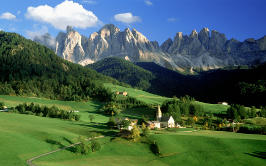
Portugal
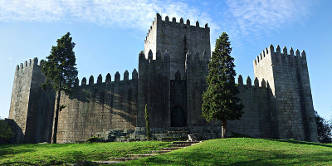
Portugal, in Southern Europe, shares the Iberian peninsula at the western tip of Europe with Spain. Geographically and culturally somewhat isolated from its neighbor, Portugal has a rich, unique culture, lively cities and beautiful countryside. Although it was once one of the poorest countries in Western Europe, the end of dictatorship and introduction of Democracy in 1974, as well as its incorporation into the European Union in 1986, has meant significantly increased prosperity. However it may be one of the best value destinations on the Continent. This is because the country offers outstanding landscape diversity, due to its North-South disposition along the western shore of the Iberian peninsula. You can travel in a single day from green mountains in the North, covered with vines and all varieties of trees to rocky mountains, with spectacular slopes and falls in the Centre, to a near-desert landscape in the Alentejo region and finally to the glamorous beach holidays destination Algarve. The climate, combined with investments in the golfing infrastructure in recent years, has also turned the country into a golfing haven. Portugal was recently named "Best Golf Destination 2008" by readers of Golfers Today, a British publication. Fourteen of Portugal's courses are rated in the top 100 best in Europe. If you want a condensed view of European landscapes, culture and way of life, Portugal might very well fit the bill.
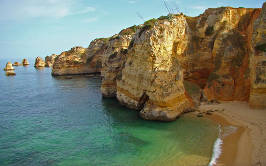
If you are into visiting beautiful monuments and enjoy remarkable views, then Lisbon, Sintra, and Porto are the top three places, and all of them are well worth a visit. But don't overlook Viana do Castelo, Braga, Guimarães, Coimbra, Tomar, Aveiro, Amarante, Bragança, Chaves, Lamego, Viseu, Vila Real, Lagos, Silves, Évora, Angra as they also have wonderful monuments and places of interest. The most popular beaches are in the Algarve, which has stunning coastlines and gobs of natural beauty. The water along the southern coast tends to be warmer and calmer than the water along the west coast, which is definitely Atlantic and doesn't benefit of the Gulf Stream. For surfing, or just playing in the surf there are great beaches all along the west coast, near Lisbon and Peniche. For nightlife Lisbon, Porto and Albufeira, Algarve are the best choices as you have major places of entertainment. If you want to spend your holidays in the countryside, you might want to visit Viana do Castelo, Chaves, Miranda do Douro, Douro Valley, Lamego, Tomar, Leiria, Castelo Branco, Guarda, Portalegre, Évora, Elvas or even Viseu. And even if you wish to observe wild life in its natural state, Madeira and Azores Islands are places to remember, not forgetting of course the Natural Reserve of Peneda-Gerês, the Douro Valley and Serra da Estrela.
Russia
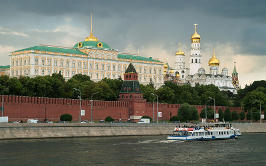
Russia, officially known as the Russian Federation — is the world's largest country, spanning Eastern Europe, and northern Asia, sharing land borders with Norway, Finland, Estonia, Latvia, Lithuania, Poland, Belarus, and Ukraine to the west , Georgia, Azerbaijan, Abkhazia and South Ossetia to the southwest, and Kazakhstan, China, Mongolia, North Korea to the east and much of the south.
Russia is immense, and extraordinarily long on attractions for visitors, although many lie in the hard-to-reach stretches of the planet's most remote lands. The best known sights are in and around the nation's principal cities of Moscow and Saint Petersburg.
Russia's history is the number one reason why tourists come to this country, following the draw of its fascinating, sometimes surreal, oftentimes brutal, and always consequential national saga.
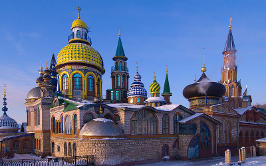
Russia has several of the world's greatest museums, particularly in the field of the visual arts. The Hermitage Museum in Saint Petersburg is the true star, with an enormous collection amassed first by the wealthy tsars (particularly by its founder, Catherine the Great) and later by the Soviets and the Red Army (which seized enormous treasure from the Nazis, who in turn had seized their bounty from their wars around the globe). Equally impressive is the edifice housing the collection on display, the magnificent Winter Palace of the Romanov Dynasty. Saint Petersburg's often overlooked Russian Museum should also be a priority, as it has the country's second best collection of purely Russian art, from icons of the tenth century on through the modern movements, in all of which revolutionary Russia led the charge ahead of the rest of the world. Moscow's art museums, only slightly less well known, include the Tretyakov Gallery (the premiere collection of Russian art) and the Pushkin Museum of Western Art.
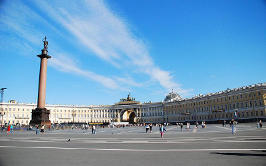
All tourists in Russia find themselves looking at a lot of churches. Ecclesiastical architecture is a significant source of pride among Russians, and the onion dome is without question a preeminent national symbol. The twentieth century, sadly, saw cultural vandalism in the destruction of said architecture on an unprecedented scale. But the immense number of beautiful old monasteries and churches ensured that an enormous collection remains. The best known, as usual, are in Saint Petersburg and Moscow, in particular the old baroque Church on the Spilled Blood, Alexander Nevsky Lavra, and the monumental Kazan and Saint Isaac's Cathedrals in the former, and Saint Basil's Cathedral and the massive Church of the Annunciation in the latter. The spiritual home of the Russian Orthodox Church is to be found at the Trinity Lavra of St. Sergius in Sergiev Posad on the Golden Ring circuit (lavra is the designation given to the most important monasteries, of which there are only two in the country), although the physical headquarters of the Church is at Danilov Monastery in Moscow. Kirillo-Belozersky Monastery in Vologda Oblast is often considered Russia's second most important (and is a neat way to get off the beaten track). Other particularly famous churches and monasteries are to be found at Saint Sophia's Cathedral in Novgorod, the Cathedral of the Assumption in Vladimir, the fascinating Old Cathedral of Königsberg (home to Immanuel Kant's tomb) in Kaliningrad, Novodevichy Convent in Moscow, Optina Putsin (the basis for Father Zossima's monastery in The Brothers Karamazov), and Volokolamsk Monastery in West MOscow Oblast. Kizhi Pogost on Lake Onega and Valaam Monastery on Lake Ladoga are also popular sites, especially with those cruising between Saint Petersburg and Moscow.
While the distances are great between them, Russia's natural wonders are impressive and worth seeking out for nature lovers. The best known destinations are far to the east in Siberia, with Lake Baikal known as its "jewel." At the extreme eastern end of Russia, nearly all the way to Japan and Alaska, is wild Kamchatka, where you will find the Valley of the Geisers, lakes of acid, volcanoes, and grizzlies galore.
Throughout the entire country, there are over a hundred National Parks and Nature Reserves (zapovedniki). The former are open to the public, and considerably more wild and undeveloped than you would find in, say, the United States. The latter are preserved principally for scientific research and are often not possible to visit. Permits are issued for certain reserves, but only through licensed tour operators. If you have the opportunity, though, take it! Some of the most spectacular parks are in the aforementioned Kamchatka, but also in the Urals, particularly in the Altai Mountains (Altai Republic and Altai Krai).
Spain
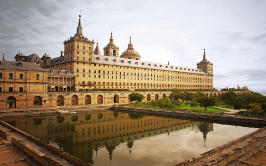
Spain is a diverse country sharing the Iberian Peninsula with Portugal at the western end of the Mediterranean Sea. It is the country with the second-largest number of UNESCO World Heritage Sites, after Italy, and the largest number of World Heritage Cities.
Spain is considered an exotic country in Europe due to its friendly inhabitants, relaxed lifestyle, its cuisine, vibrant nightlife, and world-famous folklore and festivities. Among many places worth visiting are Spain's thriving capital Madrid, the vibrant coastal city of Barcelona, the famous "Running of the Bulls" at Pamplona, major Andalusian cities with Islamic architecture, like Seville, Granada and Córdoba, the Way of St. James and the idyllic Balearic and Canary Islands.
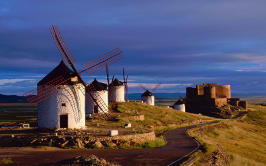
Spain is the country with the 2nd largest number of UNESCO Heritage Sites in the world. The most popular beaches are the ones in the Mediterranean coasts and the Canary Islands. Meanwhile, for hiking, the mountains of Sierra Nevada in the south, the Central Cordillera and the northern Pyrenees are the best places.
Turkey
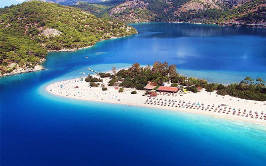
Turkey is on the Mediterranean, in the Anatolian region of West Asia, with a small section in Southeastern Europe separated by the Turkish Straits (Bosphorus, Sea of Marmara, and Dardanelles). With the Black Sea to the north and the Aegean Sea in the west and Mediterranean Sea to the southwest, Turkey is surrounded by Bulgaria and Greece to the west, Armenia, Azerbaijan and Georgia to the northeast, Syria, Iraq and Iran to the southeast.
At the crossroads of civilizations, all parts of Turkey are full of a mindblowing number of ancient ruins.
Hittites, the first indigenous people that rose to found a state in Anatolia—although there is one certain Çatalhöyük preceding them, the earliest settlement ever found to the date in Turkey—left the proof of their existence at the ruins of Hattuşaş, their capital.
Ancient Greeks and closely following Romans left their mark mostly in Aegean and Mediterranean Regions, leaving behind the marble ruins of hundreds of cities, temples, and monuments. Some are largely restored to their former glory, such as Ephesus as well as numerous others along the Aegean coast which are on the checklist of most travellers to Turkey, along with some more obscure ones off the beaten path such as Aphrodisias near Denizli, and Aizonai.
Legendary Troy stands out as an example of different civilizations literally living on the top of each other. While what is visible today is clearly Hellenistic, the place has its roots as Hittite Wilusa, and later re-built many times over by Ancient Greeks.
Perhaps the most unique "architectural" heritage in the country, some of the Cappadocian cave houses and churches carved into "fairy chimneys" and underground cities (in a literal sense!) date back to early Christians hiding from persecution.
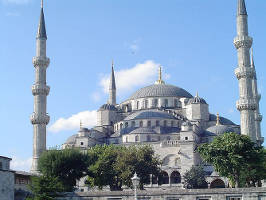
19th century brought back the Greek and Roman taste of architectural styles, so there was a huge explosion of neo-classical architecture, as much fashionable in Turkey as in the much of the rest of the world at that time. Galata side of Istanbul, Izmir (though unfortunately most of which was lost to the big fire of 1922), and numerous towns along the coasts, one most prominent and well preserved example being Ayvalık, quickly filled with elegant neo-classical buildings. At the same time, people in more inland locations were favouring pleasant, more traditional, and less pretentious half-timbered whitewashed houses, which form picturesque towns such as Safranbolu, Beypazarı, and Şirince in northern, central, and western part of the country respectively. It was also this time beautiful and impressive wooden mansions of Istanbul's seaside neighbourhoods and islands were built. Other contemporary trends of the era, such as Baroque and Rococo, didn't make much inroads in Turkey, although there were some experiments of combining them into Islamic architecture, as can be seen at Ortaköy Mosque on the banks of Bosphorus along with some others.
As the landscapes change the more east you go, so does the architectural heritage. The remote valleys and hilltops of Eastern Karadeniz and Eastern Anatolia are dotted with numerous medieval Georgian and Armenian churches and castles—some of which are nicely well preserved but not all were that lucky. Armenian cathedral on Akdamar Island of Lake Van and medieval Ani are two that lay somewhere on the midway between perfectly preserved and undergone total destruction, but both are absolutely must-sees if you've made your way that east. For a change, Southeastern Anatolia features more Middle East-influenced architecture, with arched courtyards and heavy usage of yellow stones with highly exquisite masonry. It's best seen in Urfa, and especially in Mardin and nearby Midyat.
Being on the crossroads of civilizations more often than not also means being the battleground of civilizations. So it's no wonder why so many castles and citadels dot the landscape, both in towns and countryside, and both on the coasts and inland. Most of the castles built during different stages of history are today main attractions of the towns they are standing on.
Ukraine
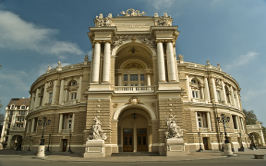
Ukraine is a country in Eastern Europe. It lies at the northwest end of the Black Sea, with Russia to the east, Belarus to the north, Poland to the northwest, Slovakia and Hungary to the west, and Romania to the south west and south, with Moldova in between. Most of the country (the central and eastern portions) was formerly a part of Russian Empire; after the October Revolution and the Civil War, the entire country, known as the Ukrainian Soviet Socialist Republic, was a part of the Soviet Union. Ukraine is the second-largest country in Europe, albeit with a slightly declining population.
